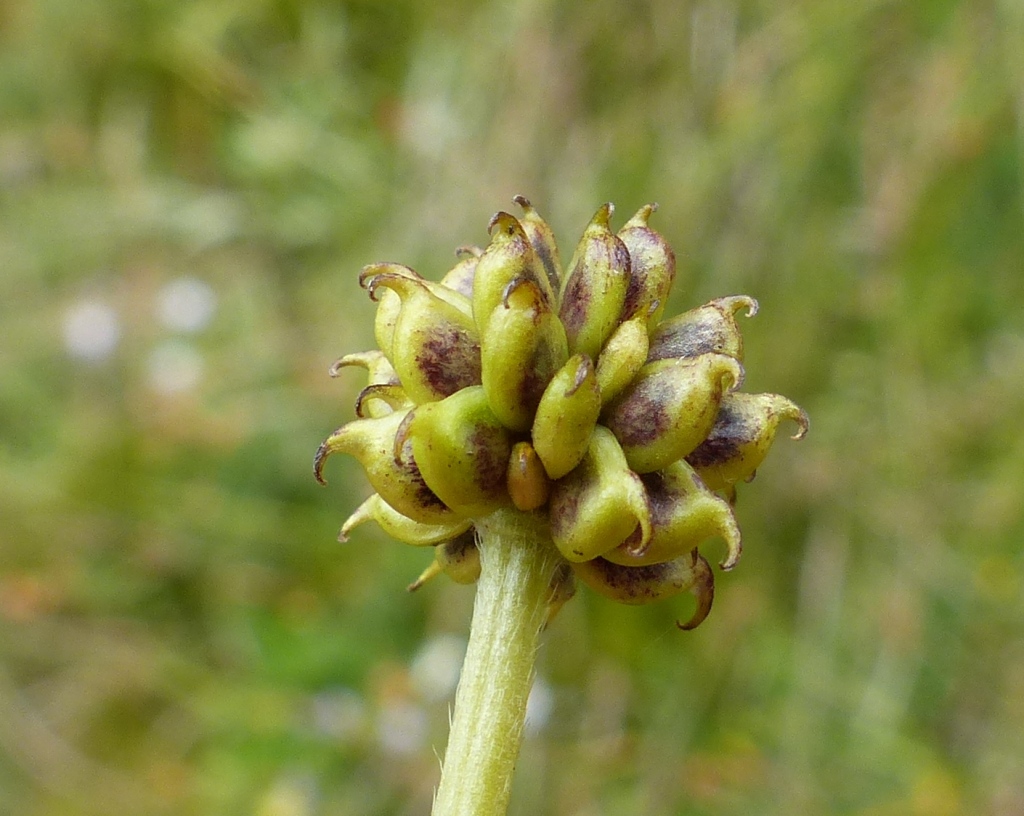Ranunculus graniticola
Melville Granite ButtercupPerennial with fibrous to slightly fleshy roots. Leaves all or mostly tufted at base; petioles 5–25 cm long, with fine spreading hairs; lamina deltoid to ovate in outline, 2–6 cm long and wide, sparsely to rather densely covered with silky appressed or weakly spreading hairs, 3-lobed to trifoliolate, the segments toothed or further lobed. Flowering stems erect, exceeding leaves, with spreading to semi-appressed hairs, 1(–3)-flowered; sepals 5, spreading, ovate to elliptic, 3–7 mm long, hairy on back; petals 5, broadly obovate, 6–15 mm long, 5–12 mm wide, yellow, glossy; nectary lobe oblong and free for the greater part, c. 0.5 mm long overall; stamens 30–70. Achenes usually 20–50, obliquely obovate, lenticular, 2–3 mm long, smooth on sides; beak strongly curved, c. 1 mm long; receptacle hispid between achenes, glabrous in the staminal zone. Flowers Oct.–Jan.
VRiv, EGU, HSF, HNF, MonT, VAlp. Also NSW, ACT. Locally common in herbfield, grassland and Snow-gum woodland communities almost throughout the alps, but apparently absent from the Baw Baws, and relatively uncommon on the Bogong High Plains (where largely replaced by R. victoriensis).
See note under R. millanii.
Walsh, N.G. (1996). Ranunculaceae. In: Walsh, N.G.; Entwisle, T.J., Flora of Victoria Vol. 3, Dicotyledons Winteraceae to Myrtaceae, pp. 35–63. Inkata Press, Melbourne.
 Spinning
Spinning

